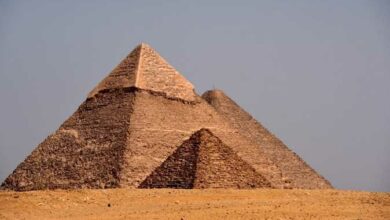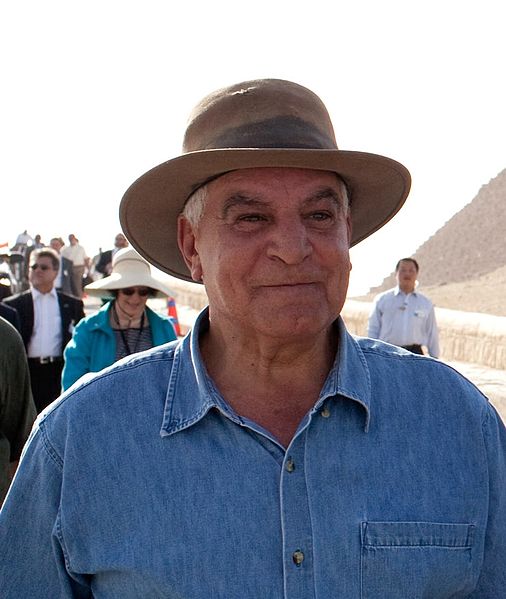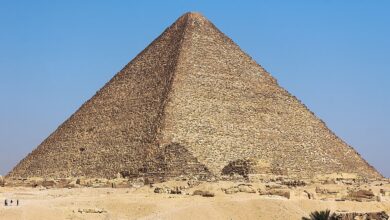
A passion for history or the mere desire to explore on the weekend might push you to conduct a tour at the most famous Egyptian landmarks, which attract visitors from around the world including Pharaonic, Islamic and Christian sites, but unfortunately, many visitors are given false information about some of the most famous monuments in Egypt upon their visit.
Al-Masry Al-Youm has gathered four common misconceptions often repeated about four of these monuments:
The Great Pyramid
The Giza Pyramids, which are the most famous landmark in Egypt, date back to approximately 4,500 years and are the cause for confusion for many visitors. The pyramids are placed near each other in a way that makes it difficult to distinguish which is the largest of the three. The middle pyramid appears to be the largest in size and height, always prompting people to mistake it for the Great Pyramid or the Pyramid of Cheops, while it is actually the Pyramid of Chephren, the middle in size and height. The Pyramid of Chephren, which was originally 143.5 meters high before erosion, is built on higher ground, to appear as the largest of the three.
The Hanging Church
Some pause a bit in front of the name, as some people think that the church is actually hanging on steel poles. But the truth is, visiting the Saint Virgin Mary's Coptic Orthodox Church or the Hanging Church is less dangerous and exciting than some think.
The church can be reached by climbing 29 steps to enjoy its interior and antique icons. The Hanging Church was given that name as it was constructed above a gatehouse of the Babylon Fortress, built by the Roman Emperor Trajan in the second century AD. The Hanging Church has been the official residence of the Patriarch of Alexandria for a long time.
Abu Simbel Temple
The Abu Simbel Temple is sought by many Egyptologists and fans of Egyptology alike. The landmark is famous for recounting the history of the victory of Ramses II during the Hittite Empire in the Battle of Kadesh, and for the sun’s alignment on the face of the statue of the Pharaonic king Ramses II twice a year: 22 February, which marks the king’s assumption of the throne, and 22 October, his birthday.
Many mistakenly believe that the temple is located inside the Aswan Governorate and can be visited as part of a tour in the governorate. The truth, however, is that the temple is located 280 km to the south, near the Second Cataract of the Nile River. So to avoid the collapse of the tourist trip make sure that the program allows you to travel 280 km to the south.
Salah Eddin Citadel
The Citadel of Salah Eddin and the Mosque of Mohamed Ali Pasha are located in the same area in Old Cairo as the mosque, built by founder of modern Egypt Mohamed Ali, is located on the site of old Mamluk buildings in the Salah Eddin Citadel. The Citadel which was a fortification built by Muslim leader Saladin al-Ayouby to protect Egypt from Crusaders in the 12th Century, is usually mistakenly called the Citadel of Mohamed Ali. Mohamed Ali Pasha Mosque, where Ali was burried, was built in the 19th Century. So visitors have to make sure the driver is heading to Salah Eddin Citadel or Mohamed Ali Pasha Citadel.
Edited translation from Al-Masry Al-Youm




